#MeanwhileInTheArctic: Russian Battle Reindeer
The Russian Arctic Brigade is using not only high-tech, but also rudimentary means of transport in the Arctic
#MeanwhileInTheArctic: Russian Battle Reindeer
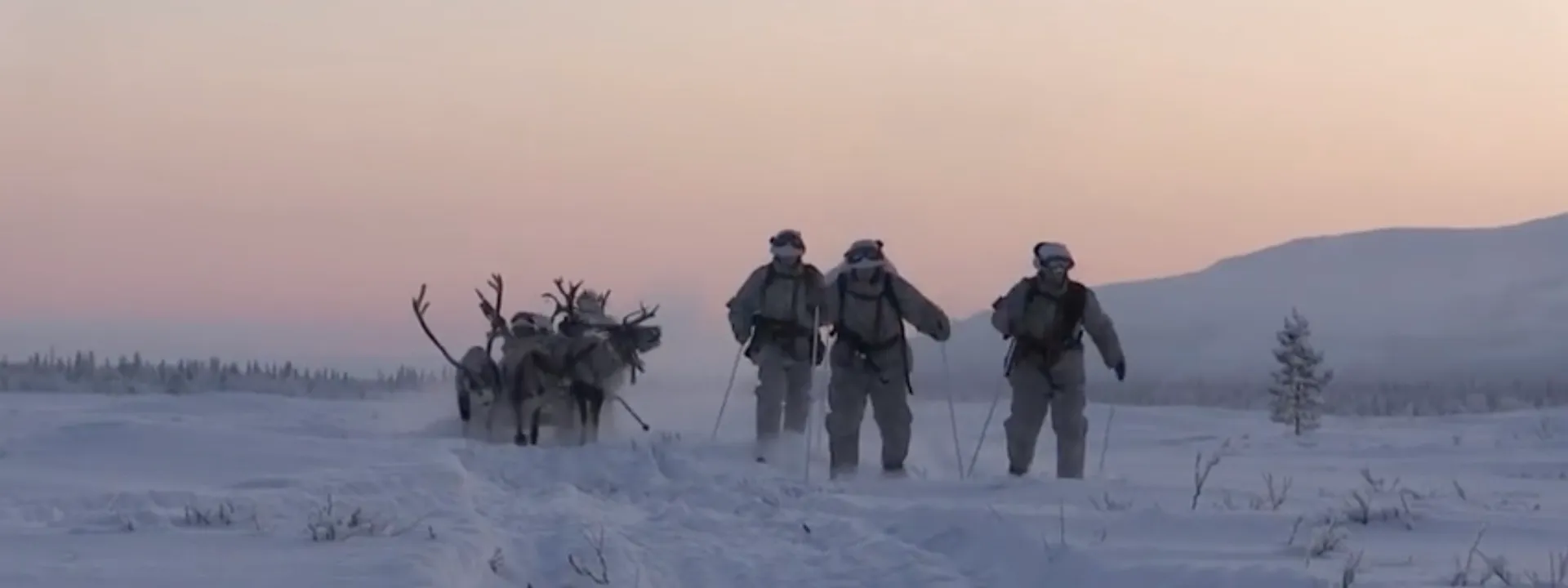
BANNER: Source: Youtube / Минобороны России
Russia shows it openly: the Arctic region is a focus area for military build-up. The Russians are moving back to the Arctic and they want the world to know that they are staying, since neighboring countries, including Canada, Denmark, Norway, and the United States, are also laying claim to the Arctic region.
The build-up began in September 2008, when the Russian government adopted an Arctic policy document and set clear goals for 2020 and beyond. In order to realize their ice-cold ambition in the Arctic, the Russian military must overcome challenges presented by the unique operating environment. Most standard military vehicles cannot withstand extreme temperatures; therefore, the Russian army developed a variety of vehicles for Arctic use. However, Russians have also turned to more basic tools used by local Arctic populations throughout history.
The overall impact is to increase Russian reach in the Arctic using a range of high-tech and low-tech means.
High-tech
By 2015, Russia established six new bases north of the Arctic Circle, including 16 deep water ports and 13 airfields. The scale of the modernization of the Russian military infrastructure in the Arctic is even larger than that of similar modernization efforts during Soviet times, and it includes a dedicated Arctic Brigade — a permanently stationed, highly mobile military force capable of a variety of offensive and defensive cold-weather operations.
The modernization efforts include the development of new equipment adapted to harsh Arctic environments. The new equipment is mostly comprised of “winterized” versions of existing Russian military hardware.
Russian equipment designed for the Arctic includes a range of defensive and offensive tools, starting with the TOR-M2DT short-range air defense missile system. The system is transported on the chassis of the DT-30PM tracked all-terrain vehicle.

The “Pantsir”-SA is a similar missile system, also installed on the DT-30PM tracked all-terrain vehicle. Its purpose is also to protect the Russian Arctic build-up.
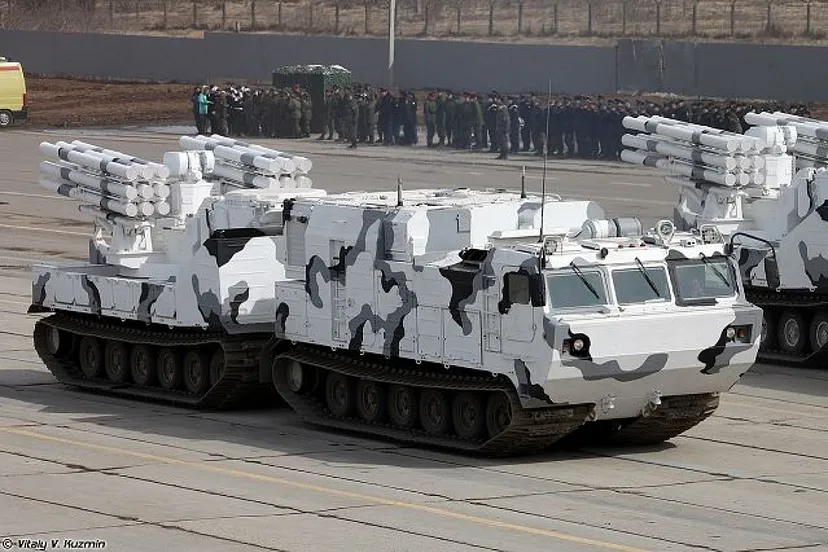
Traditional BMP-2 and BMP-3 infantry fighting vehicles, as well as BTR-80 armored personnel carriers, are not suitable for the Arctic because they lack effective heaters. One variation of these vehicles that the Russian military has introduced is the Toros tracked infantry fighting vehicle. The Toros is based on the MT-LBu vehicle, and is equipped with a snowplow, additional insulation, and heaters. The only amenity it lacks for harsh conditions is a supply of hot chocolate and schnapps.
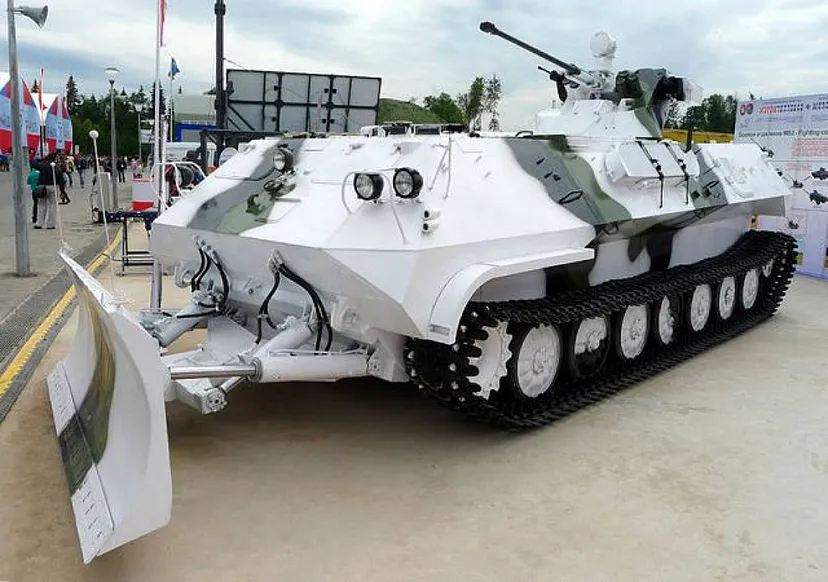
The BTR-82A vehicle, according to Sputnik, is “one of the latest versions of the BTR-80 amphibious armored personnel carrier.” It has “upgraded interior climate control to ensure the functioning of electronic equipment,” an insulated engine compartment designed to “withstand extreme temperatures,” and technology that allows it to start at “temperatures as low as -60 degrees Celsius (-76 degrees Fahrenheit).”
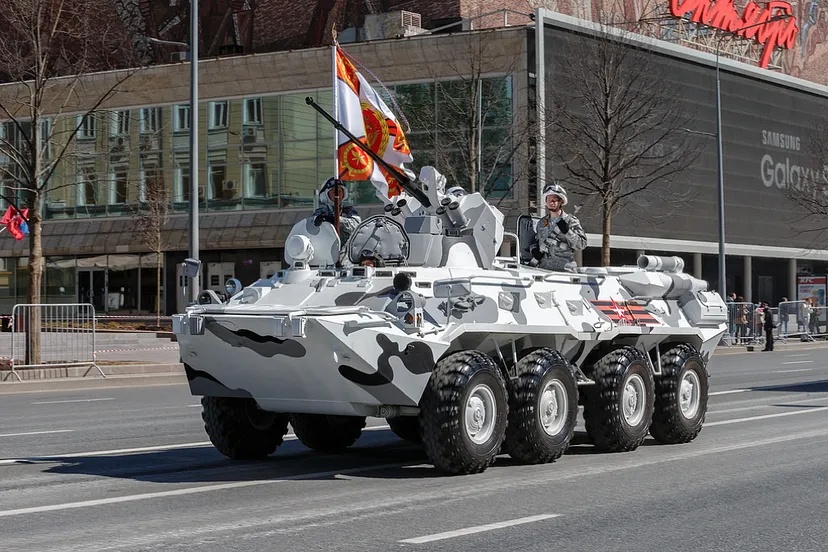
The Mi-8AMTSh-VA helicopter, according to airforce-technology.com, is a specially upgraded to operate in low-temperature and low-light conditions, and to “execute a number of missions … such as transportation and landing operations, aerial reconnaissance and targeting, and search and rescue.”
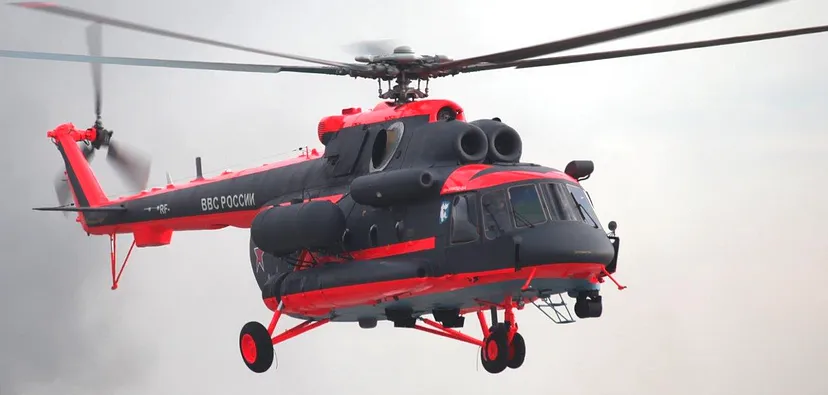
The AN-74 is a twin-turbofan airplane, “designed for [the] support of research, ice floe reconnaissance,” and transport operations in all climatic conditions ranging from -60 degrees Celsius up to +45 degrees Celsius.

The “Tayga Patrul” 551 SWT (super-wide track) super-utility vehicle has tracks that make it capable of traveling fast on even the most complicated terrain and overcoming snow covers of any depth. The super snowmobile’s engine boasts a capacity of 60 horsepower, a liquid cooling system, and a two-carburetor fuel supply system.
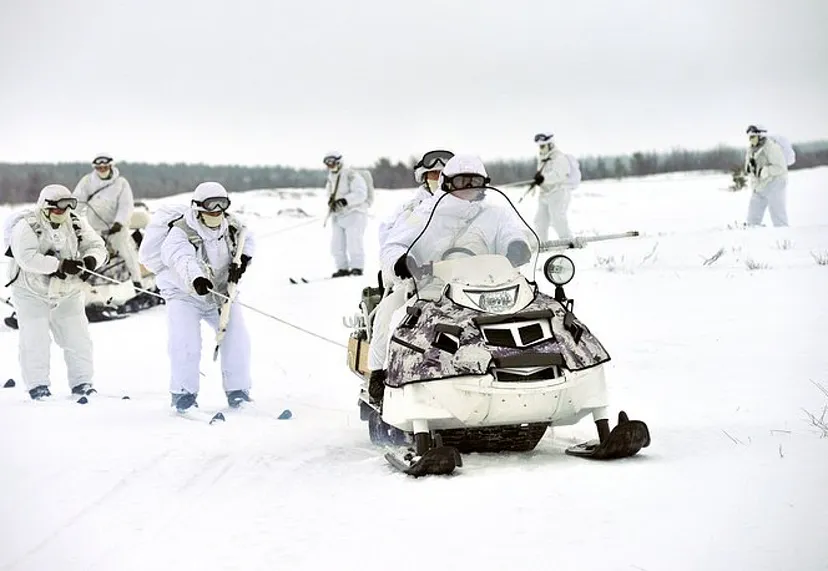
The TTM-1901 “Berkut,” according to Army Recognition, is a snowmobile “designed for … the Arctic,” “given its ability to operate at [an] ambient temperature of -50 degrees Celsius.” It can drive “on snow[,] irrespective of [the snow’s depth,] at a speed of 35-40 km/h, carrying several troops.” It also has a heated cab.
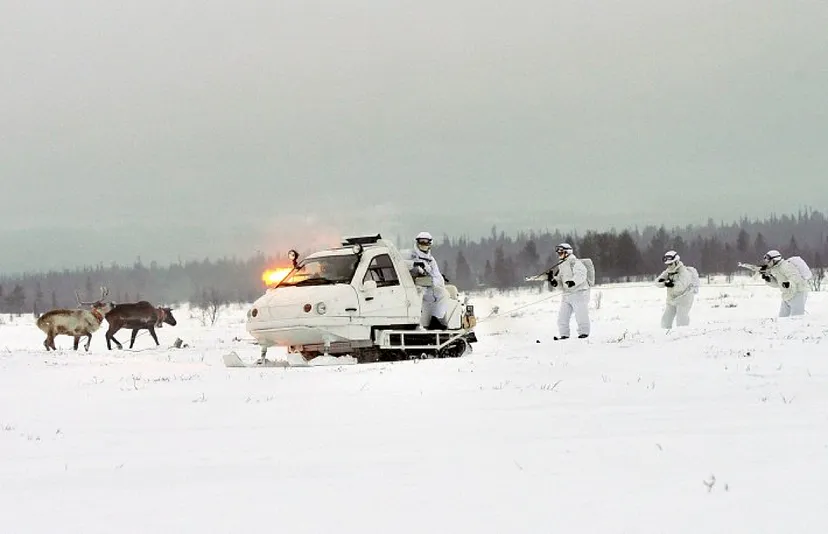
The DT-30 “Vityaz,” according to Military-Today.com, is an articulated tracked vehicle “designed to [transport] heavy loads [in extreme off-road conditions], including swamps, sand[,] and snow.” It “has two [load-carrying] areas, one on the front section and [the] other on the second articulated unit. It is “fully amphibious.”

The TM-140A, according to Army Recognition, is a tracked all-terrain vehicle “designed to have high maneuverability and survivability, even in [areas] with low bearing capacity.”

Given all of these vehicles described above, Russia put development plans into motion with a modern force adapted to Arctic conditions.
Low-tech
Although high-tech technology is undoubtedly the Russian army’s tip of the spear in the Arctic, it is not their only effort for dominance in the area. The answers to basic challenges of operating in tough terrain often come from the local ecosystem.
For example, the Northern Fleet’s 80th Independent Motor Rifle Brigade is adapting to the Arctic with measures traditionally used by indigenous and local populations, such as the Sami people.
According to Barents Observer, “The Alakurtti base (where the 80th Motor Rifle Brigade is stationed) has been under development for some time, but [the 80th Motor Rifle Brigade unit] was formally opened in January 2015.”

Another Northern Fleet unit that is also in the region (and that also does not have the word “Arctic” in its official name) is the 200th Independent Motor Rifle Brigade. According to Barents Observer, “the brigade became part of the Northern Fleet’s ground forces in December 2012,” and it is “located in Pechenga, close to the border to Norway.”

In January 2017, the Arctic Brigade held exercises at a reindeer farm in the Murmansk region. Arctic Brigade troops carried out different tactical maneuvers and enacted different scenarios: moving over tundra with dog sleds and reindeer sleds, shooting from the harness on the move, secret deliveries of ammunition and fuel to “a unit operating in the rear of the enemy,” and tactical training operations for surrounding and suppressing “enemy groups.”

Of note, the Russian military is not only using local, traditional Sami means of transportation, but they are also adopting other Sami practices in order to live in the harsh climate. During the exercise, the Arctic Brigade lived in traditional local temporary houses known as “goahti.”

The deputy commander of the exercise, Alexander Zaraisky, explained the main advantages of using reindeer sleds:
It is more expedient to use reindeer in the Arctic, since they move silently[;] even when wounded they do not make a sound. [A] reindeer sled is a very useful way … to advance secretly upon the enemy.
According to Deputy Commander Zaraisky, snowmobiles and other vehicles are too loud for such operations. Using reindeer sleds or dog sleds is slower but more quiet.
These exercises demonstrate the Arctic Brigade’s evolution toward something like Special Operations Forces (SOF). The ability to operate in a hostile environment with minimal resources, to infiltrate and exfiltrate enemy lines undetected, and to maneuver in a clandestine way are the skills of any good SOF unit. These exercises aim to teach just that — to adapt. Russia’s development of forces that are able to provide full-scope operability in such a climate is essential for securing Russia’s place as the unmatched power in the Arctic.

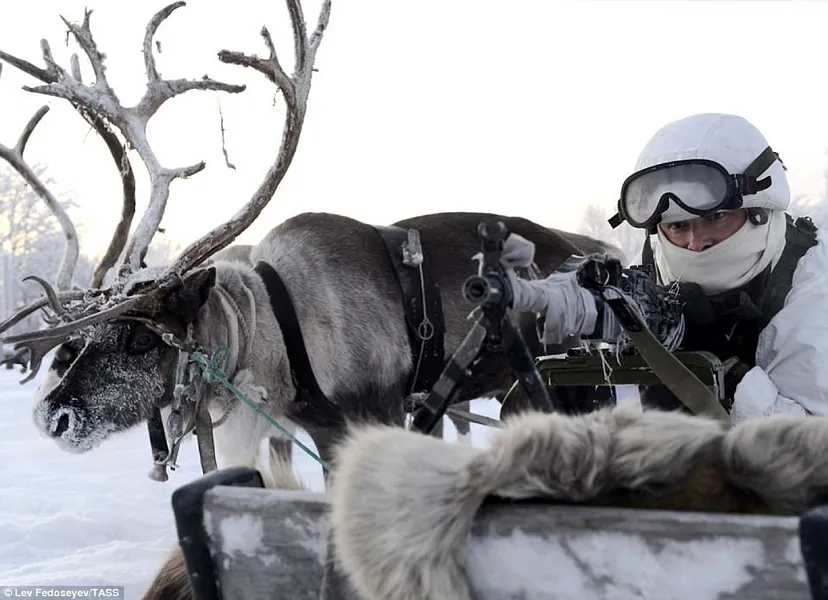

The idea of using reindeer sleds and dog sleds in military operations is not new. During World War II, the Soviet army formed a few scout units using reindeer and achieved some success. This decision was made mainly due to a lack of modern equipment that could be used in Arctic environments at that time. According to Russia Beyond the Headlines, these earlier units that utilized reindeer and dogs for transportation raided the Nazi Petsamo Airport near the village of Alakurtti in the Murmansk region in 1942.
More generally, the usage of traditional means of transportation in modern warfare is not uncommon. A well-known example is the use of horses by the American SOF during the first days of Operation Enduring Freedom in Afghanistan.

Reindeer sleds and dog sleds have not been commonly used since WWII, but now, with Russia flexing in the Arctic, these exercises are expected to become constant.
Conclusions
There is little doubt Russia is preparing for a competition over the Arctic region. The main Russian interest in the Arctic is its vast energy deposits and its strategically important metals and minerals. By increasing the extraction of resources in the region, Russia intends to secure a role as the leading Arctic power.
Russia is currently experiencing budget cuts due to low oil prices, and the Arctic program is not excluded from these cuts. But, even if Russia does decrease the funding (for a period of time lasting until 2020) from €3.1 billion to €177 million, only mega projects, like the new class of “Lider” nuclear-powered icebreakers, will be affected.
The full range of measures currently underway demonstrates that the Russian military is not only building new bases and developing modern vehicles, but it is also thinking outside the box about how to strengthen its posture in the region.
As amusing as these traditional methods may be, they should be taken as a sign of Russian intent to build up an effective Arctic force that can operate in harsh conditions and with minimal resources. Russia’s change of tactics should send a clear signal that the Arctic Brigade is developing capabilities similar to those of special operations forces.

